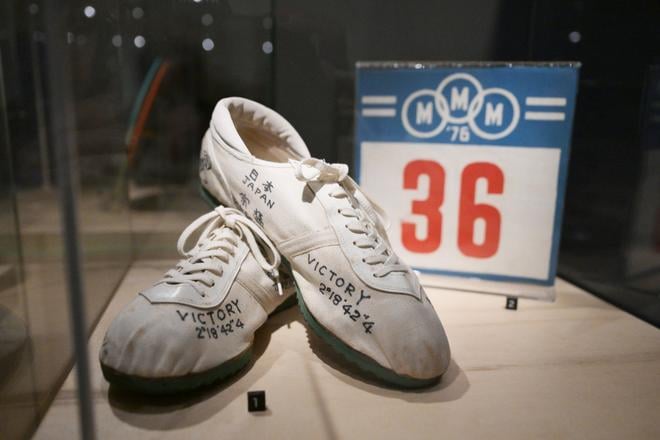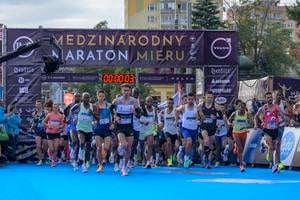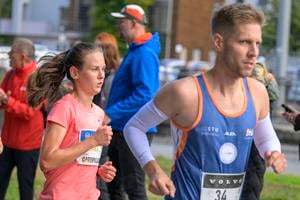You can read this exclusive content thanks to the FALATH & PARTNERS law firm, which assists American people with Slovak roots in obtaining Slovak citizenship and reconnecting them with the land of their ancestors.
Here’s a quick quiz question. Where is the oldest traditional marathon in Europe held? Would you guess maybe London or Paris, perhaps Berlin? It’s actually in Košice, eastern Slovakia!
Established in 1924, it is also the third oldest in the world after the Boston (1897) and Yonkers (1907) marathons. It has grown significantly ever since, with thousands of athletes from countries all over the world participating in the run that now takes them through the historic city centre.
From humble beginnings
Known as Košice Peace Marathon (or Medzinárodný Maratón Mieru in Slovak), the event owes its establishment to the 1924 summer Olympics in Paris. Košice-born sport afficionado and journalist Vojtech Braun Bukovský visited the Olympics and became particularly fascinated by a marathon race.
Upon his return, he decided to organise a run himself. Just a few weeks later, on October 28 – on the 6th anniversary of the establishment of Czechoslovakia – eight local runners started running from below the ruins of the Turňa Castle close to the Hungarian border near Košice. Braun Bukovský made sure that from the very beginning the route was 42.195 kilometres long, which is the standard distance today but not at the time. The winner was Karol Halla, who finished the route with the time of 3:01:35 (for comparison, the current record is 2:06:55 held by Kenyan runner Philemon Rono)
The following year, the track changed and international runners joined as well, and very soon started making a name for themselves. The track changed once again in 1926, with runners racing from Košice to the nearby village of Seňa and back. With the exception of the 1951 and 1952 editions, this route remained a staple for many decades.
Already in 1931, Argentinian athlete Juan Carlos Zabala was able to shave almost 30 minutes from Halla’s time. His then record of 2:33:19 came as a shock, especially because this was his very first marathon. He was able to improve the then best time by 8 minutes. His feat was a foreshadowing of his future win at the 1932 Summer Olympics in Los Angeles.
The Second World War did not put an end to the Košice marathon. Between 1946 and 1956, runners from the Nordic countries dominated the event, winning 8 out of 10 races, with Swede Thomas Nillson setting a record of 2:22:06 in 1956. Swedes in particular were very fond of the marathon, preferring it to the Boston one.
In 1960, the city of Košice was given a 3.5 metre tall bronze statue of a marathon runner. It became a symbol of the event and to this day stands above the names of all the winners of the race, with Abebe Bikila, a 1960 and 1964 Olympic winner, among them. He was responsible for attracting thousands upon thousands of people who came to see him race, not only in the stadium but lining the track as well.
The 1980 edition brought about a big change. For the first time, women were allowed to compete, with Christa Vahlensieck, a German runner and marathon pioneer for women, dominating five times in 1981, 1984, 1986-88.
In 1983 – 59 years after its establishment – Slovak runner František Višnický won the race in a competition with a total of 1120 runners. He won once again in 1986. Slovaks Peter Pipa, Ľudmila Melicherová (both in 1994), Róbert Štefko, Katarína Jedináková (both 1999) and Marek Hladík (2020) are among the winners as well.
Recognition
Just a few months before the Velvet Revolution, the Košice marathon saw another huge change. The traditional course from Košice to Seňa made way for a new course through the historic and wider city centre, around the famous Cathedral of St. Elizabeth and other architectural gems in Košice. The course is flat and paved.
In fact, this course made its debut during the 1977 IAAF World Half Marathon Championships and caught the interest of the athletic world.
The Košice Peace Marathon has been certified by the Association of International Marathons and Distance Races, while the European Athletics Running has certified it as a 5-Star Quality race. If that was not enough, in 2020 it received the World Athletics Heritage Plaque for its outstanding contribution to the history and development of world athletics. Not even the Covid pandemic stopped the Košice marathon.
In 2023, Kenyan runner Philemon Rono set a new course record of 2:06:55, beating Ethiopian Kebede Tulu by just one second and improving the previous record set by Kenyan Lawrence Kimayo by six seconds. Among women, the record is held by Kenyan Rebecca Tanui, who ran it in 2:21:08 last year.
Spectacular Slovakia travel guides
A helping hand in the heart of Europe thanks to our Slovakia travel guide with more than 1,000 photos and hundred of tourist spots.
Our detailed travel guide to the Tatras introduces you to the whole region around the Tatra mountains, including attractions on the Polish side.
Lost in Bratislava? Impossible with our City Guide!
See some selected travel articles, podcasts, and traveller info as well as other guides dedicated to Nitra, Trenčín Region, Trnava Region and Žilina Region.


 Running shoes that belonged to Japansese runner Takeshi So who won the marathon in 1976. (source: TASR)
Running shoes that belonged to Japansese runner Takeshi So who won the marathon in 1976. (source: TASR)



 Košice is the second largest town of Slovakia. (source: Adobe Stock)
Košice is the second largest town of Slovakia. (source: Adobe Stock)